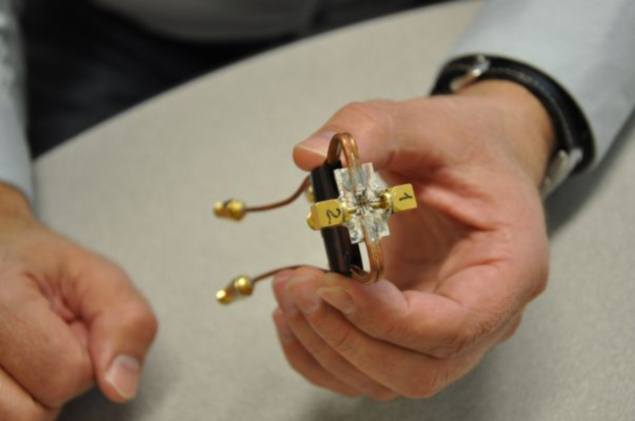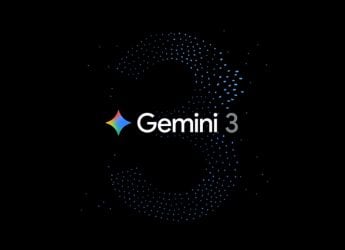- Home
- Laptops
- Laptops News
- New holographic memory device could improve storage capacity and processing
New holographic memory device could improve storage capacity and processing

This memory device uses 'spin waves' - a collective oscillation of spins in magnetic materials - instead of optical beams.
Spin waves are advantageous because spin wave devices are compatible with the conventional electronic devices and may operate at a much shorter wavelength than optical devices, allowing for smaller electronic devices that have greater storage capacity.
"The results open a new field of research which may have tremendous impact on the development of new logic and memory devices," said Alexander Khitun, lead researcher at University of California, Riverside.
The study found it was feasible to apply holographic techniques developed in optics to magnetic structures to create a magnonic holographic memory device.
Holography is a technique-based on the wave nature of light which allows the use of wave interference between the object beam and the coherent background.
It is commonly associated with images being made from light, such as on driver's licenses or paper currency. However, this is only a narrow field of holography.
Khitun and his team conducted the experiments using a 2-bit magnonic holographic memory prototype device. A pair of magnets, which represent the memory elements, were aligned in different positions on the magnetic waveguides.
Spin waves propagating through the waveguides are affected by the magnetic field produced by the magnets. When spin waves interference was applied in the experiments, a clear picture was produced and the researchers could recognise the magnetic states of the magnets. The findings of the study are published (advance copy) in the journal Applied Physics Letters.
There are three co-authors of the 'Magnonic Holographic Memory' paper: Frederick Gertz, a graduate student who works with Khitun at UC Riverside, and A. Kozhevnikov and Y. Filimonov, both of the Russian Academy of Sciences.
Get your daily dose of tech news, reviews, and insights, in under 80 characters on Gadgets 360 Turbo. Connect with fellow tech lovers on our Forum. Follow us on X, Facebook, WhatsApp, Threads and Google News for instant updates. Catch all the action on our YouTube channel.
Related Stories
- Samsung Galaxy Unpacked 2025
- ChatGPT
- Redmi Note 14 Pro+
- iPhone 16
- Apple Vision Pro
- Oneplus 12
- OnePlus Nord CE 3 Lite 5G
- iPhone 13
- Xiaomi 14 Pro
- Oppo Find N3
- Tecno Spark Go (2023)
- Realme V30
- Best Phones Under 25000
- Samsung Galaxy S24 Series
- Cryptocurrency
- iQoo 12
- Samsung Galaxy S24 Ultra
- Giottus
- Samsung Galaxy Z Flip 5
- Apple 'Scary Fast'
- Housefull 5
- GoPro Hero 12 Black Review
- Invincible Season 2
- JioGlass
- HD Ready TV
- Laptop Under 50000
- Smartwatch Under 10000
- Latest Mobile Phones
- Compare Phones
- Realme P4x 5G
- OnePlus Ace 6T
- Nubia Flip 3
- Nubia Fold
- OPPO A6x 5G
- Samsung Galaxy Z TriFold
- Poco F8 Ultra
- Poco F8 Pro
- Asus ProArt P16
- MacBook Pro 14-inch (M5, 2025)
- Poco Pad M1
- Poco Pad X1
- Just Corseca Skywatch Pro
- Honor Watch X5
- Acerpure Nitro Z Series 100-inch QLED TV
- Samsung 43 Inch LED Ultra HD (4K) Smart TV (UA43UE81AFULXL)
- Asus ROG Ally
- Nintendo Switch Lite
- Haier 1.6 Ton 5 Star Inverter Split AC (HSU19G-MZAID5BN-INV)
- Haier 1.6 Ton 5 Star Inverter Split AC (HSU19G-MZAIM5BN-INV)
-
 Google Releases Gemini 3 Deep Think Model to Its Most Expensive Subscription Tier
Google Releases Gemini 3 Deep Think Model to Its Most Expensive Subscription Tier
-
 Meta’s Phoenix Mixed Reality Smart Glasses Reportedly Delayed; Could Finally Launch in 2027
Meta’s Phoenix Mixed Reality Smart Glasses Reportedly Delayed; Could Finally Launch in 2027
-
 iPhone 16 Deal Alert: Get It for Just Rs 65,900 Effective Price
iPhone 16 Deal Alert: Get It for Just Rs 65,900 Effective Price
-
 OpenAI Clarifies It Isn’t Testing Ads on ChatGPT Despite User Claims
OpenAI Clarifies It Isn’t Testing Ads on ChatGPT Despite User Claims












